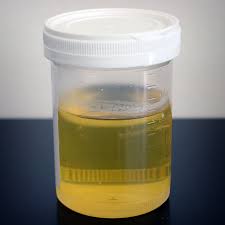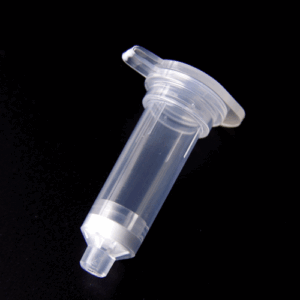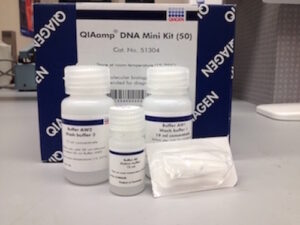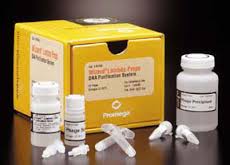Molecular biology work require DNA / RNA in the first place. Source of Nucleic Acid required may vary depend on the kind of work. Nucleic acid can be isolated from bacteria, Virus, Human, etc and most of the labs use Commercial Nucleic acid extraction Kits for Isolating DNA / RNA.
Here is how the Spin Column based Nucleic Extraction Kits work:
Sample source can be: Blood, Urine, Stool, CSF, Bacterial Culture, etc.
 |
| Urine sample for Nucleic Acid Extraction |
 |
| Blood Sample for Nucleic Acid Extraction |
There are 4 Main Steps in DNA / RNA Purification:
- Lysis
- Binding
- Washing
- Elution
Lysis:
Sample is lysed using Lysis Buffer. Lysis Buffer generally contains high concentration of Chaotropic Salts (Guanidine HCL, Guanidine Thiocyanite, Urea, etc). The role of chatropic salts is to destabilize Hydrogen bonds, vander wall forces and hydrophobic interaction. These salts destabilizes proteins like nucleases and also play key role in removing interaction of water from DNA.
Detergents and Proteases are also included in most of the kits, Detergents aid in protein solubilization and cell lysis, whereas Protease (Proteinase K widely used serine preotease in the nucleic acid extraction kits) helps in digesting proteins which may otherwise interfere in the downstream process.
Binding:
Once the sample is lysed, Next step is binding the DNA / RNA to the silica spin column. Chaotropic salts aided in Lysis also helps in binding nucleic acid to the column. To enhance the binding of nucleic acid to the column, Alcohol is used.
 |
| Spin Column |
Alcohol can be Ethanol or Isopropanol (IPA). Percentage of Alcohol used may vary in different nucleic acid extraction kits. The amount of alcohol used has influence on the yield of nucleic acid.
Nucleic Acid Extractions kits are optimized amount of alcohol, which results in higher yields of the nucleic acid.
To the Lysed Blood sample, Ethanol is added and loaded on to the Spin column for binding.
Qiagen Blood Mini Kit Lysis and Binding Steps is as follows:
- Pipet 20 μl QIAGEN Protease (or proteinase K) into the bottom of a 1.5 ml
microcentrifuge tube.
- Add 200 μl sample to the microcentrifuge tube. Use up to 200 μl whole blood,
plasma, serum, buffy coat, or body fluids, or up to 5 x 106 lymphocytes in
200 μl PBS.
- Add 200 μl Buffer AL to the sample. Mix by pulse-vortexing for 15 s.
- Incubate at 56°C for 10 min.
- Briefly centrifuge the 1.5 ml microcentrifuge tube to remove drops from the inside
of the lid.
- Add 200 μl ethanol (96–100%) to the sample, and mix again by pulse-vortexing
for 15 s. After mixing, briefly centrifuge the 1.5 ml microcentrifuge tube to remove
drops from the inside of the lid.
The adsorption of Nucleic acid to the silica membrane is driven by dehydration and hydrogen bond formation, which competes against weak electrostatic repulsion. High concentration of chaotropic salt will help drive DNA adsorption and low concentration will release the DNA from the silica.
Washing
Once the Lysate is passed through column, DNA / RNA will stay adsorbed to the column and the proteins and other contaminants would have collected in the flow through. Even though most of the contaminants got removed, there is still lot of contaminants in the silica membrane along with the DNA, those contaminants needs to be first removed before eluting DNA from the Silica. This is achieved by washing the column multiple times.
If the sample used was blood, spin column will be tinted yellow colour, blood pigments and other protein contaminants needs to be removed from the silica.
Number wash steps used may vary depending on the extraction kit used. Generally a low chaotropic salt wash followed by ethanol wash is performed.
QIAamp DNA Mini Blood Mini Kit – Qiagen
NucleoSpin® Blood – Macherey Nagel
GeneJET Whole Genomic DNA Extraction Kit – Thermo Scientific
Wizard Genomic DNA Extraction Kit – Promega
Got something to say about this post? Leave a comment…your comments are valuable for improving the posts.



